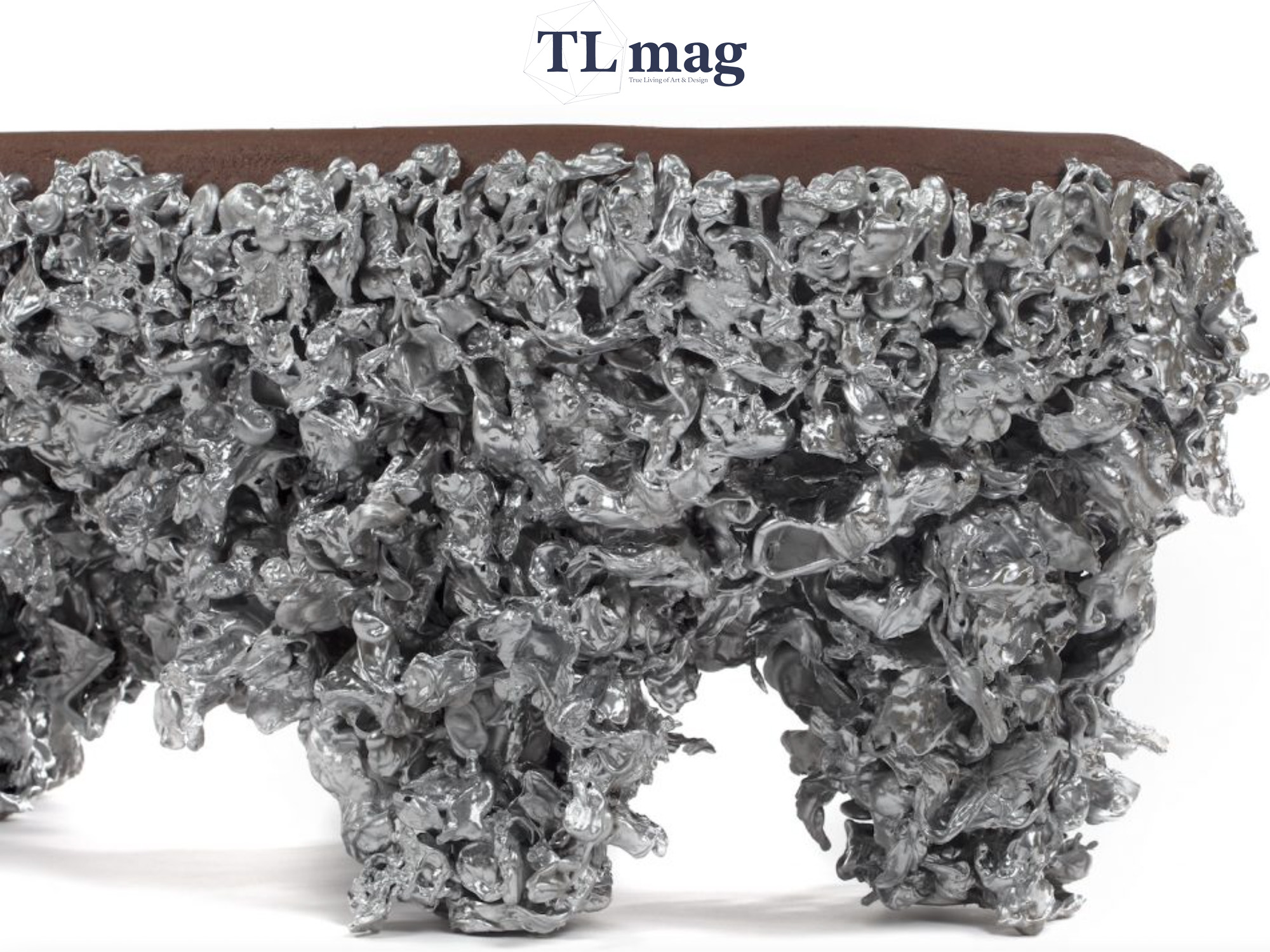Blaire Dessent
Estudio Campana has been a force in the design world since its launch 40-years ago, and this spring, there will be a suite of exhibitions and events to celebrate this milestone, beginning with “On the Road” at Friedman Benda. The exhibition is the fifth with the gallery, but the first since the passing of Fernando Campana, Humberto’s brother and studio partner, in 2022. “On the Road” marks a new passage for Humberto and Estudio Campana, but one deeply connected to its roots. For this new collection of work, he was pulled by certain natural materials such as earth and grass, connecting him to Brazil and local craft traditions as well as more spiritual connections reflective of life and transition. Humberto Campana shared insight about this new work with TLmag.
TLmag: Would you talk about some of the natural materials you reconnected with for this new series of works? Why do you think you were pulled towards them or what about them connected with you during this transitional moment in your life and led to creative ideas?
Humberto Campana: This collection introduces a few materials that are very representative of this moment in my life: earth, metal, and grass. The year before the passing of Fernando, he and I were already revisiting our roots and rediscovering materials such as terracotta and bamboo. Since he left us, I continued on that road and pulled in some dormant ideas that resurfaced in a dream I had with my brother.
For this exhibition, I am presenting a new collection made of leftover aluminium, called “Paisagem” (Landscape in Portuguese), using a technique we experimented with years ago, blended with adobe, a very rudimentary composite made with earth and straw. It is probably one of the most intricate pieces I have ever produced, and quite extreme in terms of contrast between rawness and allure, simplicity and opulence.
TLmag: Transformation has always been a through-line in your work over the last 40 years, but this collection certainly has an even deeper sense of that meaning and experience for you personally. Is there a new piece in this exhibition you could maybe talk briefly about in connection with this idea?
H.C.: I would say the ‘Capim Dourado’ buffet and ‘Jalapão Chair’ are both made with a naturally golden straw called ‘Capim Dourado,’ which only grows in the centre of Brazil. They undergo a very strict harvesting and handling process led by local communities, who are aware of the balance between extracting and preserving the environment. This straw is commonly found in street stands in Rio and São Paulo as fashion accessories and household items, and we repurposed it into furniture. It means a lot to me to be able to incorporate a material that has deep Brazilian roots and represents organized communities dedicated to sustainable practices—something that was unimaginable 40 years ago.
TLmag: Did you do a bit of traveling for research & inspiration as well as with regards to sourcing materials and gathering ideas?
H.C.: Yes, in 2022 I travelled to Santa Catarina, a state in the south of Brazil, where I saw first-hand the adobe construction process, something I have been investigating for about four years. It is a vernacular construction tradition that we inherited from Africa during colonial times, which mixes earth, water, and straw. We call these constructions “Taipa” houses, made in places with scarce resources to this day. I was attracted by this ancient tradition because it symbolizes the ability of human beings to construct something with the utmost simplicity. From this learning experience, I started exploring different ways of working with this material and adapting the process to furniture making and integrating adobe as part of our new works.
TLmag: Were the pieces made in Sao Paulo? You worked with local craftspeople to help produce them?
H.C.: Yes, I have a team of fifteen people in my studio, including design, procurement and production, which are with me each step of the process, from prototyping to sourcing and testing materials. Aside from that, we outsourced the adobe production to a person specialised in it to make the parts according to our design; selected a foundry that agreed to work with recycled aluminium leftovers, and glassblowers for the light fixtures.
TLmag: Would you talk about the Brotas Park project scheduled to open in June? Is this in connection with the studio celebrating 40-years in 2024?
H.C.: The Campana Park is a botanical garden Fernando and I started building in 2020, during the COVID-19 lockdown, in our hometown of Brotas, 150 miles west of São Paulo. It’s an ambitious, long-term project led by our foundation, Instituto Campana, that occupies an area of 52 hectares and aims to integrate art, education, and nature. It will include twelve green pavilions, seven of which are completed. Each is built with local materials, plants, and natural fibres such as bamboo, agave, straw, and cacti. Visitors will experience, in parallel, an environmental research project by scientists from São Paulo University to give us solutions for forest regeneration, connecting science and sustainable economic agendas. The idea is to offer educational programs, workshops, artist residencies, and small exhibitions from our collection in a space that invites you to meditate and connect with nature. The soft opening of the first stage will take place in June, marking our 40th anniversary.
Estudio Campana, “On the Road”, is on view at Friedman Benda










